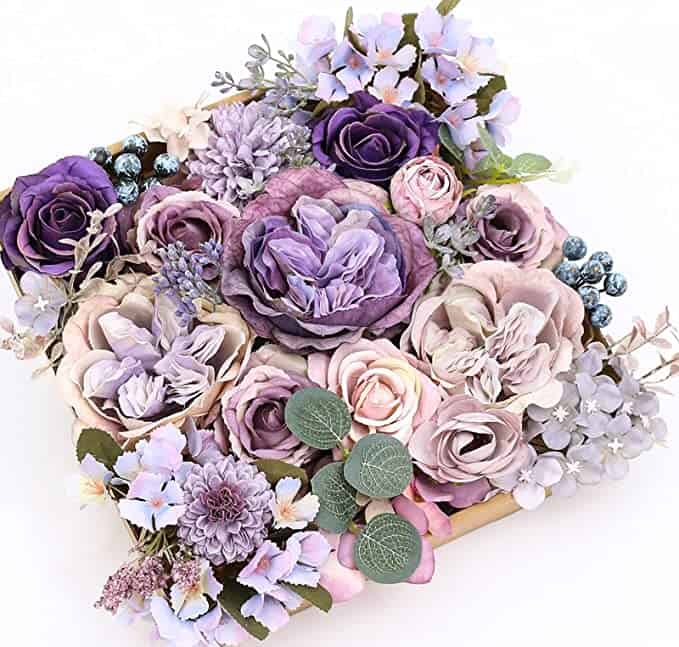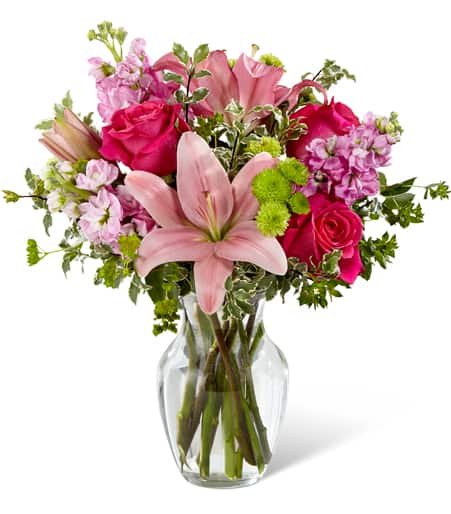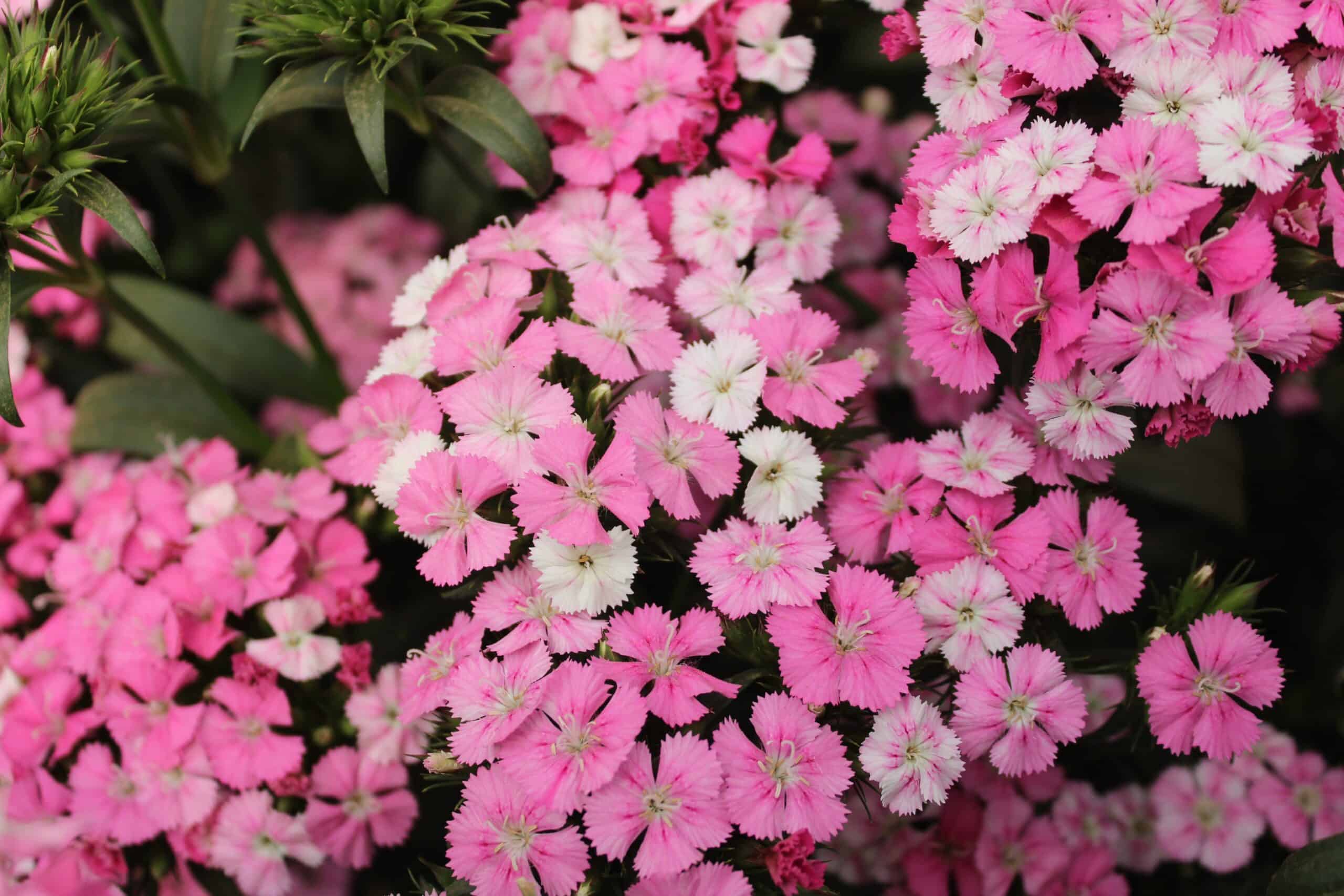Violet slipper (Jovellana Violacea) is a beautiful and understated flower that adds a touch of color and whimsy to any garden. It is a member of the Primulaceae family and is an upright-forming, semi-evergreen, herbaceous perennial. Its leaflets are toothed and are presented in opposite pairs, however, its softly hued, bell-shaped flowers are its stand-out feature. These blooms, named for their slipper-like appearance, usually feature a pale purple color with small purple spots along the flower’s edges and a yellow throat.
Violet slippers prefer a full sun or partial shade setting and they can thrive in both outdoor and indoor potting. They are fairly easy to care for and once they are established they will bloom from late spring through to summer. This makes them the perfect choice for anyone looking to add a pop of year-round color to their garden.

Buy these artificial flowers on Amazon>>
How to Plant and Grow Violet Slipper Flower
Violet slipper flower is an easy to grow plant, once you provide it with the care it needs. It does best in full sun to part shade, with temperatures between 40 to 75 degrees Fahrenheit. It should also be planted in well-drained soil, with a 6.5-7.5 pH level, in a sheltered location. To create this shelter, planting it near a wall, a fence or a hedge row can provide it with the protection it needs from extreme cold or wind.
When it comes to watering, it should be watered once or twice a week, but it should be checked often to ensure it’s not drying out. During the summer months, it may also need to be watered more often. If planting in a pot, ensure the soil is moist, but not overly wet.
Violet slipper flowers can benefit from regular fertilization, although too much can harm them. In summer months, a balanced fertilizer should be applied once a month. If planting in a pot, fertilize once a week with an all-purpose liquid fertilizer.
Meaning and Symbolism
The name Violet Slipper Flower is derived from their deep purple, bell-shaped petals that resemble the shape of a slipper. Symbolically, the flower has been associated with humility, morality, spirituality and prolific fertility. In some cultures, it is said to symbolize secret love, which may be why it is a popular flower for weddings.
Violet Slipper Flower has also been used to commemorate birthdays and anniversaries, to offer sympathies or condolences, and to celebrate special milestones and accomplishments. It is a special and meaningful flower that can be used in a variety of ways to express emotional sentiments.
History, Mythology, and Religious Significance
Violet slipper flower is an ancient flower that has been in existence for thousands of years. Historical records and mythology tell us many stories about this intriguing flower. While its exact origin is unknown, it is believed to have first been found and cultivated by the ancient Egyptians. In ancient Egypt, it was associated with and used to celebrate the gods Osiris and Isis. In Ancient Greece, it was used to honor and celebrate Other gods, such as Aphrodite and Demeter.
In both Christianity and Judaism, it has long been associated with the Virgin Mary and has been used to symbolize purity and innocence. In Christian traditions, it has been used to express faith and love, as well as dedication to the church. In some Islamic cultures, it has been used to symbolize the “eye of Allah” or the divine protection of God.
Buy Flowers on FloristOne>>
Flower Varieties and Their Defining Characteristics
Violet Slipper Flower comes in a range of different varieties, each with its own unique characteristics and defining features. While each variety may differ slightly in size, shape, and color, all varieties share the same basic flowering characteristics. The most common varieties of Violet Slipper Flowers are:
- Jovellana violacea – This variety has large, bell-shaped flowers that are deep purple in color and marked with yellow spots along the edges. It has an upright growth habit and can reach heights of up to two feet.
- Jovellana violacea ‘Rainbow’s End’ – A rare variety of Violet Slipper Flower, it features stunning yellow-orange flowers and dark purple veins mottled with pink and salmon. It can reach heights of up to one and a half feet.
- Jovellana violacea ‘Lime Star’ – A particularly hardy variety of Violet Slipper Flower, this variety features vibrant lime-green flowers on a compact, spreading mound. It can reach heights of up to one foot.
How to Pot and Repot
Violet Slipper Flower is a plant that does well when potted, and it is relatively easy to do. When transplanting, it is best to use a potting mix that is rich in organic matter and contains small particles. This will help the roots spread evenly. Plant the flower in a pot that is one to two inches larger than the root ball. Ensure the plant is kept in an area that is bright, but away from direct sunlight. When repotting, ensure the plant is watered properly and the mix is not compacted. When transplanting in spring, apply top dressings and any fertilizer just after, to give the plant a boost.
How to Prune
Violet Slipper prefers to be pruned in the early spring, before new growth emerges. Pruning aids in the overall health of the plant and helps to keep it lush and full. To prune, use sharp, clean shears and cut back any straggly, dead, or diseased branches. When pruning, avoid cutting too far back, as this may cause damage to the new growth. Also avoid cutting any of the lower stems, as this may affect the health of the plant.
How to Propagate
Violet Slipper Flower may be propagated through seeds, cuttings, and division. Seeds can be planted outdoors in autumn or spring, or indoors in early spring. When planting either outdoors or indoors, make sure to provide the seedlings with rich, moist soil and plenty of drainage. Care should be taken not to overwater, as this can cause seedlings to rot. When propagating through cuttings, use a sharp, sterilized blade to take cuttings from the plant, and plant these in a soil mix that is rich in organic matter.
Division is another easy way to propagate Violet Slipper. In early spring, carefully dig up the entire plant, then carefully divide it into sections with a sharp knife. Plant each section into separate pots or beds, making sure to give them plenty of organic matter, drainage, and sun. After planting, regularly water the newly divided plants to help them establish roots.
Common Pests and Diseases
Violet Slipper Flowers are generally quite resistant to common pests and diseases, but that does not mean that they are immune. Common pests such as aphids and caterpillars can cause damage to the plant. To avoid infestations, regularly inspect the plant for insects and remove them by hand. Appropriate insecticides can also be used if necessary.
Common diseases include powdery mildew, root rot, and leaf spot. To avoid root rot, make sure the soil is well-draining and that the plant is not overwatered. To help reduce the risk of powdery mildew, ensure the plant has adequate air circulation and avoids humidity. If leaf spot does occur, it is important to remove any affected leaves and treat the plant with a fungicide.
Three Frequently Asked Questions about Jovellana Violacea
1. How do I know when to water my Violet Slipper Flower?
When it comes to watering Violet Slipper Flower, it should be watered when the top two inches of soil is dry to the touch. During the summer months, it may need to be watered more often due to increased temperatures. It is important to ensure that the flowering plant is never allowed to dry out completely, as this can result in damage to the flower.
2. What kind of fertilizer should I use?
When fertilizing Violet Slipper Flower, it is best to use a balanced fertilizer one that is specifically designed for flowering plants. During the summer months, it is recommended to fertilize the plant once a month. If planted in a pot, an all-purpose liquid fertilizer should be applied once a week.
3. Is Violet Slipper Flower safe for pets?
Violet Slipper Flowers are generally considered non-toxic, but it is best to err on the side of caution and keep them away from pets and small children. The plant may cause irritation if ingested and can cause skin irritation if it comes into contact with the skin. If an affected pet does ingest the plant, seek veterinary help immediately.
Table Fact Sheet with Data
| Violet Slipper Flower | Jovellana Violacea |
|---|---|
| Family | Primulaceae |
| Plant Type | Perennial |
| Mature Size | 1-2 feet |
| Sun Exposure | Full sun to partial shade |
| Soil Type | Well-drained |
| Soil pH | 6.5-7.5 |
| Bloom Time | Late spring to summer |
| Flower Color | Purple, yellow, orange |
| Hardiness Zones | 8-11 |
| Native Area | Southern/south-eastern USA |
What we love from Amazon this week
Buy these wonderful flowers directly from Amazon:
















